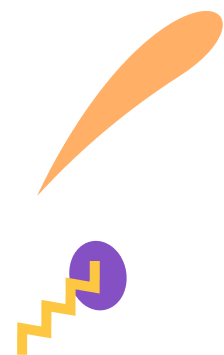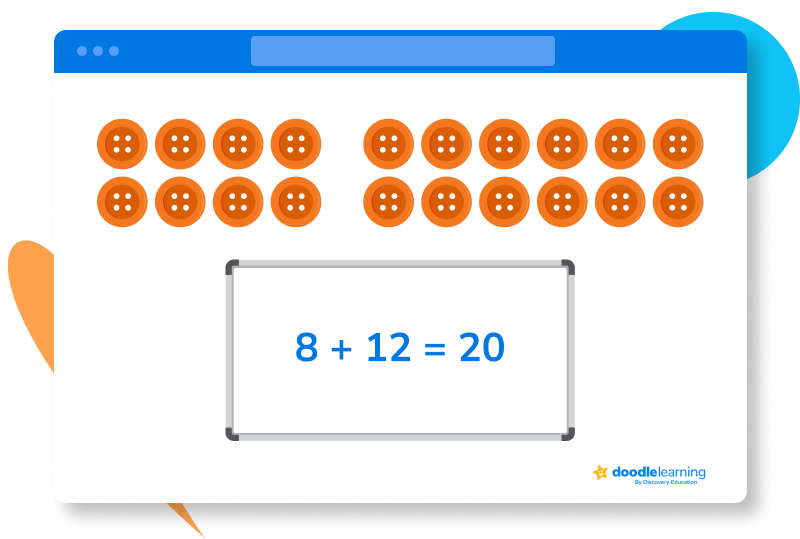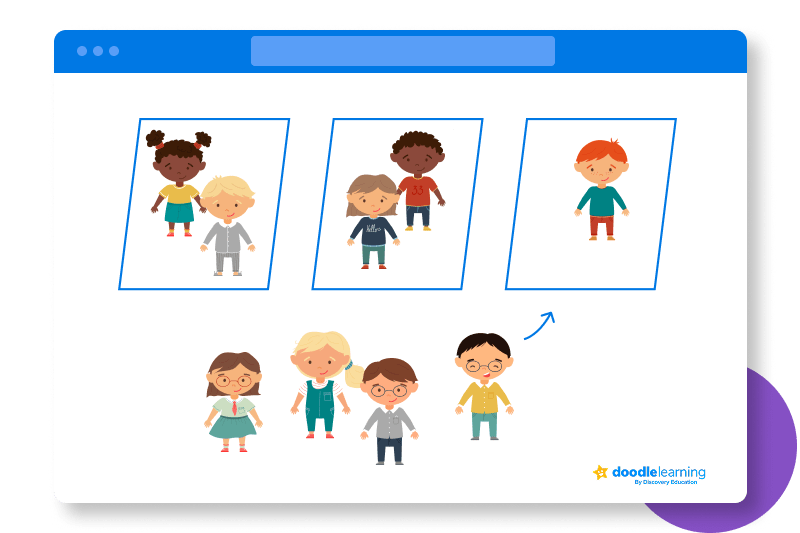


Author
Mhairi Sim
Published
July 2025


Key takeaways
Table of contents
Engaging Year 2 maths activities really make a difference when it comes to teaching learners key mathematical concepts such as number sense, shape, and basic operations. Having fun and getting hands-on with tricky topics like fractions and money can turn a once anxiety-inducing lesson into something exciting that learners love.
Whether you’re a teacher looking for some exciting new Year 2 maths activities for your class or a parent hoping to get in some additional practice at home, we know your little learners will love the activities we’ve gathered here in this post!
The Year 2 maths curriculum is packed with new learning for kiddos as well as some consolidation of previous learning from Year 1.
Their curriculum is focused on four key areas:
Unlock unlimited maths questions
Put your skills to the test with fun exercises + maths games that are proven to boost ability!
Maths is a tricky subject for some, but hands-on, game-based learning is a real winner. Here is our list of tried-and-tested Year 2 maths activities that teach and reinforce key maths concepts, broken down by skill!
An essential element of place value learning is partitioning, which is the practice of splitting up a number using place values. For example, the number 23 can be split into 20 and 3, or 2 tens and 3 ones.
1. Place value bingo
Each player has a bingo board with different numbers written as numerals, and the caller will call out numbers with place value language. For example, the number 30 is called out as “three tens”.
2. Use crafting supplies
Beads and pipe cleaners are fantastic resources to help kids visualise what we mean by partitioning and what that looks like for different numbers. Have children pick out a given number of beads and ask them to put groups of 10 beads on pipe cleaners to reinforce the concept that ten ‘ones’ are one ‘ten’. The leftover beads are left loose as ‘ones’.

Unlock unlimited maths questions
Put your skills to the test with fun exercises + maths games that are proven to boost ability!
Try DoodleMaths for free!
Select a year group
When tackling addition and subtraction with Year 2 students, it’s always a good idea to use manipulatives to demonstrate the physical element of adding or taking away items.
Try asking your kiddos to use manipulatives to show you different ways to make 20 to build knowledge of these number bonds. They can take 20 items and split them into two groups, then write the maths equation below.

You can use anything as a manipulative – LEGOs, pom poms, buttons, centimetre cubes – whatever you have lying around!
Students select a domino and count the dots on each side, then add or subtract the numbers depending on which aspect they are focusing on. Kiddos can play in groups where the player with the highest (or lowest) number wins the round!

In my experience, measurement is the easiest topic to make fun and exciting, as there are so many ways to get creative here, especially with Year 2 maths activities!
Show kiddos three objects and three weights in grams (g). Their task is to match up the pairs and then check their answers by weighing each object themselves.
Game-based learning is a firm favourite of students across the country. But with thousands of websites and apps targeted at kids, which is best? The DoodleMaths app stands out as it is recommended by teachers, parents, and kids!
Our award-winning app uses a specialised algorithm to find and close gaps in users’ learning by tailoring activities to their performance. The content is fully aligned with the National Curriculum, and adults can track their learners’ progress against key curricular standards.
Supporting your child with their maths learning at home is easier than most parents think – you’re probably already doing a lot of it without even realising! Let’s take a look at some teacher-recommended at-home Year 2 maths activities.
A huge part of getting kids engaged with their learning is to make it fun, and what better way to do this than to let them get hands-on and DIY some of their own games and tools?
Did you know that early maths ability is one of the strongest predictors of a child’s later academic achievement? There are a few reasons why this is the case:
Early maths learning supports essential and practical life skills like telling the time and working with money

Parents, sign up for a DoodleMaths subscription and see your child become a maths wizard!

Book a chat with our team
If you’d like to use Doodle’s browser version, please visit this page on a desktop.
To log in to Doodle on this device, you can do so through our apps. You can find out how to download them here: